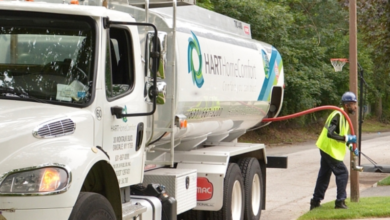Blending Creativity with Precision: How Modern Ad Campaigns Use Audience Targeting Solutions to Maximize Impact

The Symbiotic Dance of Data and Creativity
It’s easy to think of programmatic advertising as just a bunch of numbers and algorithms, right? Like, it’s all about hitting the right audience at the right time with automated precision. But honestly, that’s only half the story. The real magic happens when you mix that data smarts with actual creative thinking. Think of it like a dance – data provides the rhythm and the steps, but creativity is what makes it captivating and memorable.
Harnessing Dynamic Capabilities for Relevance
Programmatic tools let us do some pretty cool things with ads that weren’t possible before. We can adjust ads based on things like the weather, or what’s happening in a big sports game, or even if there’s a power outage nearby. It’s about making the ad feel like it belongs in that exact moment, which makes people pay more attention. It’s not just showing an ad; it’s showing the right ad at the right time, making it feel less like an interruption and more like a helpful suggestion.
The Art of Hyper-Personalization
This is where things get really interesting. Instead of showing the same ad to everyone in a group, we can now create ads that feel like they were made just for one person. Imagine an ad for ice cream that shows a picture of a sunny day if it’s hot outside, or a cozy scene if it’s cold. This level of detail, driven by what we know about individuals, makes the ad much more likely to grab someone’s attention and make them feel understood. It’s about making each ad feel like a one-to-one conversation.
Data-Driven Insights Fueling Creative Output
So, how do we actually come up with these personalized ads? It all starts with the data. We look at who our most valuable customers are, where they spend their time online, and what they seem to be interested in. This information isn’t just for targeting; it directly influences the creative itself. If data shows people respond well to certain colors or messages, the creative team can use that to build ads that are more likely to succeed. It’s a constant feedback loop: data informs creativity, and the results of that creativity feed back into the data, helping us get even smarter.
The biggest hurdle often isn’t the technology, but getting different teams – like creative, data, and marketing – to work together smoothly. When these groups collaborate from the start, the campaigns are much stronger and more effective.
Unlocking Creative Potential with Programmatic Solutions
Synergy of Data, Technology, and Communication
Programmatic advertising isn’t just about automated ad buying; it’s where data, technology, and creative messaging come together. Think of it as a team effort. Data tells us who to talk to, technology helps us reach them efficiently, and creativity is how we make that message stick. When these three work well, campaigns become much more effective. It’s about using all the tools available, from data management platforms to advanced targeting options, to make sure the right message gets to the right person at the right time. This approach allows for a level of precision that traditional methods just can’t match.
Experimentation Through a Diverse Toolkit
Programmatic advertising offers a whole playground for trying new things. There are so many different partners and technologies out there, each with unique solutions. You’ve got platforms that help manage customer data, others that help you buy ad space, and even tools that help create ads on the fly. Plus, with AI and machine learning, you can tweak campaigns in real-time to see what works best. This means you can test different messages, different visuals, and different ways of reaching people. It’s a constant cycle of trying, learning, and improving, all thanks to the variety of audience targeting solutions available.
Creativity as the New Competitive Advantage
In today’s crowded ad space, just having good targeting isn’t enough anymore. Creativity is what really makes a campaign stand out. When you combine smart data with imaginative creative work, you can make ads that people actually want to see. This means not just showing an ad, but telling a story, evoking an emotion, or providing something useful. Brands that figure out how to blend their data insights with compelling creative execution will have a real edge. It’s about making ads that are not only seen by the right people but are also remembered and acted upon.
Transforming Impressions into Engagements
It’s easy to think of ads as just flashing images or short videos, but really good ones do more. They turn a simple impression, just someone seeing your ad, into something more. This means getting them to actually interact, to click, to learn, or even to buy. It’s about making that moment count.
Inventive Thinking in Programmatic Frameworks
Programmatic advertising gives us a structure, a way to get ads in front of the right people at the right time. But within that structure, there’s a lot of room for creativity. Think about ads that change based on the weather, or a sports score, or even what someone just searched for. This isn’t just showing an ad; it’s showing the right ad, at the perfect moment. It makes the ad feel less like an interruption and more like helpful information or even entertainment.
Strategic Use of Data and Design
We’ve got all this data about who people are and what they like. Using that data smartly is key. It’s not about knowing everything about someone, but about understanding enough to make the ad relevant. Combine that with good design – clear messages, appealing visuals – and you’ve got something that grabs attention. It’s about making sure the data and the look of the ad work together.
Connecting Data for Impactful Creatives
Getting different data sources to talk to each other is a big challenge, but it’s where the magic happens. When you can connect what someone did on a website with what they watched on TV, or what they searched for, you get a fuller picture. This allows for creatives that feel personal and make sense in the context of what the person is doing or thinking. It’s this connection that turns a generic ad into one that feels like it was made just for them, leading to real engagement.
The Evolution of Advertising Strategies
Advertising today is a far cry from the days of just TV spots and magazine pages. The whole game has changed, really. We’re seeing a massive shift towards strategies that are super specific, aiming to hit the right person with the right message, exactly when they’re most likely to pay attention. It’s not just about getting eyeballs anymore; it’s about making those eyeballs actually care and do something.
Precision-Driven Marketing for High-Value Leads
Forget casting a wide net and hoping for the best. Modern marketing is all about being sharp. For businesses, especially in the B2B space, this means zeroing in on those few key people who actually have the power to make a decision. Think account-based marketing, where you tailor your whole approach to a specific company. Tools like LinkedIn Ads and smart analytics help us figure out who these important folks are and what they care about. It’s about making sure our ad money goes towards leads that are actually worth pursuing, not just random clicks.
Blending Creativity with Data-Driven Decisions
This is where things get interesting. We can’t just rely on gut feelings anymore. Data tells us what’s working and what’s not, but it doesn’t write the ad copy or design the visual. That’s where creativity comes in. The best campaigns use data to understand the audience – what they like, where they hang out online, what problems they’re trying to solve – and then use that information to craft messages that feel personal and relevant. It’s like having a super-smart assistant who tells you who to talk to, and then you use your creative skills to figure out what to say.
Focusing on Long-Term Audience Relationships
It used to be all about the quick sale, the one-off transaction. Now, it’s more about building something lasting. Brands are realizing that if they can create genuine connections with people, those people will stick around. This means being consistent, providing value beyond just selling a product, and always being mindful of the user experience. It’s about earning trust over time, not just grabbing attention for a moment. When you treat your audience like people you want to keep around, they tend to stick with you.
The advertising landscape is constantly shifting. What worked last year might not work today. Staying ahead means being willing to try new things, learn from the results, and adapt quickly. It’s a continuous cycle of testing, learning, and refining.
AI’s Role in Elevating Advertising
Artificial intelligence is really changing how ads are made and shown. It’s not just about showing ads anymore; it’s about showing the right ad to the right person at the right time, and AI makes that possible on a huge scale. Think about it: instead of a one-size-fits-all approach, AI helps tailor messages so they feel more personal. This means ads are more likely to grab someone’s attention because they actually relate to what that person might be interested in. This shift is making advertising much more effective and less of a nuisance for consumers.
Revolutionizing Ad Targeting with AI
AI platforms look at a lot of information – like what people click on, what they search for, and even what they buy. They use this to figure out who is most likely to be interested in a product or service. This is way beyond just basic demographics. AI can spot patterns that humans might miss, grouping people based on very specific behaviors or interests. This means advertisers can spend their money more wisely, reaching people who are genuinely likely to become customers, rather than just blasting messages out to everyone.
Dynamic Content Personalization at Scale
This is where things get really interesting. AI doesn’t just help target who sees an ad; it can also change what the ad actually looks like or says. Imagine an ad for a clothing store. AI could show different outfits or highlight different features based on whether the person viewing it has previously looked at sportswear or formal wear. This kind of dynamic content means ads can adapt on the fly, making them more relevant to each individual. It’s like having a personal shopper for every ad impression, which is a big deal for creative services in advertising.
Predictive Analytics for Campaign Optimization
AI also helps look into the future, in a way. By analyzing past campaign performance and current trends, AI can predict which ads are likely to do well and where. This allows marketers to adjust their strategies before they even spend all their budget. For example, if an AI notices that ads shown on a certain app during a particular time of day aren’t getting many clicks, it can suggest shifting resources to a different platform or time. This constant learning and adjustment process helps make sure campaigns are always performing at their best, reducing wasted money and improving results.
The Ascendancy of Programmatic Advertising
Programmatic advertising has really changed the game for how brands get their messages out there. It’s basically about using technology to buy and sell ad space automatically, in real-time. Think of it like this: instead of calling up newspapers or TV stations one by one, you can manage everything through one system. This makes things way faster and more efficient. It’s not just about display ads anymore either; it covers video, apps, connected TV, and even digital billboards outside. This shift from manual to automated media buying is a big deal.
Automating Real-Time Ad Placements
Before programmatic, buying ad space was a whole process involving negotiations and manual orders. Programmatic flips that. It uses algorithms and real-time data to figure out the best ad spots and prices. This means ads get placed automatically, right when and where they’re most likely to be seen by the right people. It’s all about making the buying process smarter and quicker.
Seamless Cross-Platform Ad Delivery
One of the coolest things about programmatic is how it handles ads across different places. You can manage campaigns that show up on websites, mobile apps, streaming services, and even smart TVs, all from one spot. This makes sure your message is consistent no matter where someone sees it. It’s like having a central command center for all your advertising efforts.
The Integration of AI and Machine Learning
AI and machine learning are really the brains behind programmatic. They help sort through all the data to find the best audiences and optimize ad performance on the fly. This means campaigns get smarter over time, learning what works and adjusting automatically. It’s how ads become more relevant to us as viewers and more effective for the brands paying for them.
Human-Centered Approaches in Modern Campaigns
It’s easy to get lost in the numbers and the tech, right? But at the end of the day, we’re talking to actual people. Campaigns that really hit home are the ones that remember that. They’re not just about showing an ad; they’re about making a connection. This means being smart with data, sure, but using it to be more thoughtful, not just more aggressive. Think about it: nobody likes feeling like they’re being spied on or bombarded with stuff they don’t care about. Brands that get this are the ones building real loyalty.
Respecting User Privacy for Brand Loyalty
This is a big one. People are more aware than ever about their data. When a brand shows it respects that, it builds trust. And trust? That’s gold. It’s not about avoiding data altogether; it’s about using it responsibly. For example, instead of tracking someone across the entire internet, a brand might use data to show them an ad for something they actually looked at on that brand’s own site. It feels less intrusive, more helpful. Studies show a huge number of shoppers will just walk away from brands that feel pushy with their ads. So, being mindful of privacy isn’t just good manners; it’s good business. It leads to customers who stick around because they feel good about the brand, not because they feel trapped.
Leveraging Data for Personalized Social Campaigns
Social media is where a lot of these human-centered approaches really shine. We can use data to figure out what people are talking about, what their interests are, and what kind of content they respond to. Then, we can tailor ads to fit that. It’s not about showing everyone the same thing. It’s about showing a cat lover an ad for a pet store and a foodie an ad for a new restaurant. When done right, it feels less like an ad and more like a helpful suggestion. Brands that do this see way more people actually clicking and engaging. It’s like having a conversation, not shouting into the void. We’re seeing more and more brands use this to create campaigns that feel like they were made just for you.
Interactive Content for Enhanced Engagement
Beyond just personalized ads, making content interactive is another way to be human-centered. Think quizzes, polls, or simple games related to the brand. These aren’t just time-fillers; they actively involve the user. When people participate, they’re more likely to remember the brand and feel a connection. It’s a two-way street. We’ve seen a big jump in brands using this kind of content because it works. It’s a way to get people involved without being pushy. It makes the experience more enjoyable and memorable, which is exactly what we want from marketing. It’s about creating something people want to interact with, not something they feel forced to see.
Frequently Asked Questions
What’s the main idea behind using audience targeting in ads?
Think of it like this: advertising used to be like shouting at a big crowd, hoping someone would listen. Now, we use smart tools to figure out who might actually be interested in what we’re selling. Then, we show them ads that are made just for them, like a friendly chat instead of a loud announcement. This makes ads more helpful and less annoying.
How does targeting make ads more personal?
It’s about making ads feel more personal. Instead of showing everyone the same ad, we use information about what people like and need to show them ads that fit them perfectly. It’s like getting a special offer just for you, rather than a general sale.
How do data and creative ideas work together in ads?
Data helps us understand what people are interested in. Creatives are the fun parts of the ad, like the pictures and words. When we mix what we learn from data with cool creative ideas, we can make ads that grab people’s attention and make them want to learn more.
What is programmatic advertising?
Programmatic is like a super-fast, automatic way to show ads. It uses computers to decide who sees an ad and when, based on lots of information. This helps make sure the right ads get to the right people at the right time, without needing someone to do it all by hand.
How is AI making ads smarter?
AI, or artificial intelligence, is like a super-smart helper for advertising. It can look at tons of information to guess what people might like, change ads on the fly to make them better, and help us figure out what’s working best in our campaigns.
Why is respecting privacy important in advertising?
It’s important to be careful with people’s information. When brands use data wisely and show ads that are actually useful, people feel more respected and are more likely to like the brand. It’s about building trust, not just selling things.




